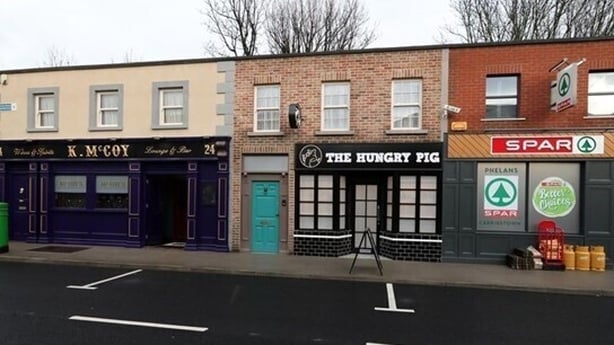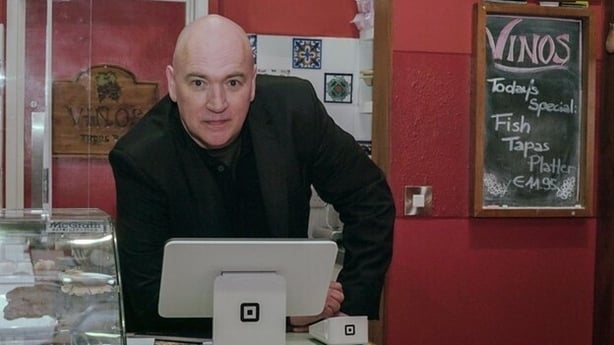Ireland's favourite soap, Fair City, was first broadcast in 1989 and focuses on the lives and residents of Carrigstown. Since its inception, the home-grown soap has captivated viewers with jaw-dropping storylines and engrossing character developments.
To take a closer look at just how the soap has drawn such a legacy, we caught up with the Fair City writers to gather the inside scoop into what makes Ireland’s longest-running soap so successful.
Storylines are planned meticulously, but last-minute changes are inevitable
You might be fooled into thinking that the stories in Carrigstown simply unravel themselves, but there are multifaceted writing stages to each and every storyline. Script writers work months ahead on their plotlines, weaving together various storylines and ensuring a realistic timeline for their story arcs. While they plan for every eventuality, quite often unforeseen circumstances mean eleventh hour shake-ups in the writers’ room. If a cast member suddenly becomes unavailable, the story needs to be rewritten very quickly, or a completely new story conceived, depending on the stage of production.

For each episode, there are three distinct storylines running throughout. The 'A' story is the biggest storyline, taking up the most screen time, forming the backbone of the entire episode. This is the most dramatic, often leaving viewers in a suspenseful cliffhanger at the end, waiting for the big character dilemma to be answered in the next episode. The ‘B’ story has less screen time and will have an entirely different pace than the ‘A’ story. The third strand includes the exterior story, commanding the same screentime as the B story, but plays entirely outside on exterior locations, such as McCoy's or The Hungry Pig.
One of the greatest challenges that the writing team contends with is ensuring that stories are realistically paced. Some of the more emotional and turbulent storylines need more time to breathe, allowing sentiment to build and creating room for character evolution, whereas other plot-driven action-heavy storylines are paced much more quickly. The balance of light and shade in every episode is crucial. A humorous, light-hearted story will often be crafted to ensure that the plot twist turns the story much darker, very quickly.
The writing process is a well-oiled machine

At any one time, there are approximately 70 Fair City scripts in existence at various stages of production. The story room generate stories at least six months in advance before the episodes appear on screen, which means that Christmas and New Year storylines are written and ready to go by the middle of the summer. The scripting process takes another five months, cycling through different production stages.
As a guiding principle for the writers, every character should want something, and their wants should be disrupted by their relationships with other characters. When breaking a new story, the writers ask; why would the character do this, what do they want? How can they stop them from getting it? Every story and script writer knows each character's voice intimately. They can write each character into a corner and get them out of it, burning down buildings and relationships along the way. The soap’s researcher is also a vital part of the team, steering writers away from irrational and crazy ideas but also finding dramatic solutions.
The show feels a responsibility to reflect the mood of the nation
The soap certainly doesn’t shy away from hard-hitting issues, as we’ve recently seen with the storyline following Anto (played by Paul Ronan), where viewers at home have been gripped to his struggle with gambling addiction.

Another iconic hard-hitting storyline that will surely be embedded in viewers' minds was the turbulent story of domestic abuse in a same-sex relationship between characters Will and Cristiano. While these two got together under tricky circumstances, they started off relatively happy. This tranquility slowly escalated into signs of gaslighting and moved on to psychological abuse, coercive control and then domestic violence. The harrowing story ended in near fatal injuries for the victim, followed by a court case, exemplifying an incredibly complex situation that presented a number of unforeseen prejudices to overcome.
While the writers won't necessarily touch on current affairs topics, they do feel the need to reflect certain nationwide issues within the lives of Carrigstown residents. These are subtly woven into the character’s stories, particularly when it comes to irrefutable matters such as the rising cost of living.
And because it’s a continuing drama, non-everyday problems are also depicted. For example, viewers will remember when gangster Ritchie Lennon arranged to have Carol’s Taxi Office firebombed to serve as a warning - not such a common occurrence in everyday business trading!

Whether it's McCoy’s, Spar, The Station, The Hungry Pig or Vino’s, Carrigstown reflects the role that small businesses play across Ireland, and the challenges that business owners face. This is conveyed not just in the scripting, but also through the set design and even the presence of modern real-life point of sale and payment systems within the sets, such as Square’s Point of Sale and payment systems Square Stand and Square Terminal.
Square makes technology that helps businesses more easily run and grow with its integrated ecosystem of commerce, staff, and customer solutions. For more information, visit: square.com


